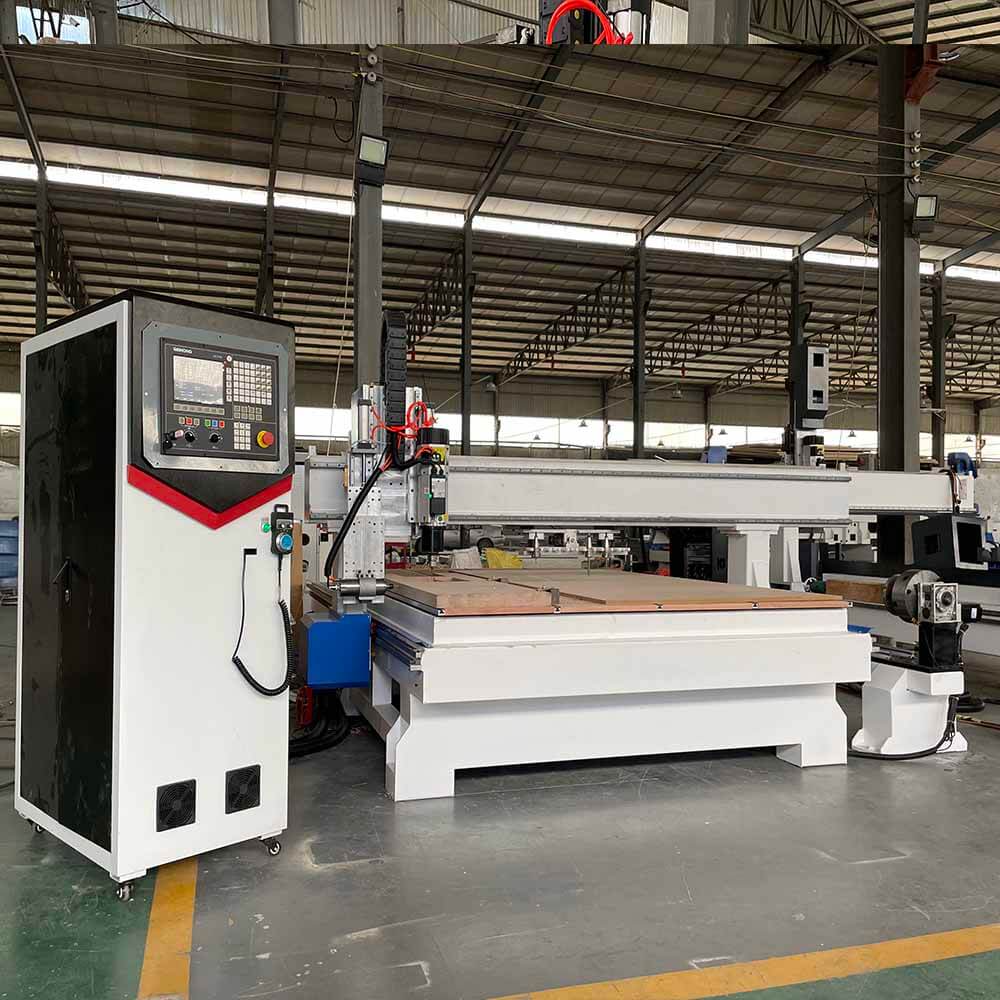
Related Blogs
Explore the world of 5-axis CNC routers! Discover their precision, key features, and applications in woodworking and manufacturing. Get tips for choosing the right machine for your projects!
If you work in metal fabrication, automotive, aerospace, or custom parts manufacturing, investing in a fiber laser cutting machine can completely transform your workflow.
This article will walk you through everything you need to know about CNC fiber laser cutting machines, their advantages over traditional cutting methods, how they work, and what to consider before purchasing one.
A fiber laser cutting machine is an industrial tool that uses a high-powered laser beam generated through fiber optics to cut metal materials with extreme precision. Unlike CO₂ lasers, fiber lasers operate at a wavelength of 1064nm, which is ideal for cutting metals such as:
The fiber optic laser cutting machine transfers the laser beam through flexible fiber cables, making the system more stable, efficient, and compact.
Whether you are cutting a 0.5mm stainless steel sheet or a 20mm thick carbon steel plate, a fiber laser cutting machine provides reliable and repeatable performance.
The process begins with the generation of a laser beam inside a laser resonator using fiber-optic cables doped with rare-earth elements like ytterbium. This beam is then focused through a lens and directed onto the surface of the material.
The focused energy heats the material to the point of melting or vaporization. A high-pressure assist gas—such as oxygen or nitrogen—is used to blow the molten material away from the cut area.
A CNC (Computer Numerical Control) system precisely guides the laser head according to the design file (usually in DXF or DWG format), ensuring consistent cuts every time.
If you’re in the market for a fiber laser cutting machine, here are key factors to consider:
Common configurations include 1kW, 3kW, 6kW, and up to 12kW or more. Higher wattage allows cutting thicker materials but comes at a higher cost.
Standard sizes like 3015 (1500mm x 3000mm) are suitable for most applications. Larger beds allow for greater production flexibility.
Not all fiber lasers are suitable for reflective metals like copper and aluminum. Make sure your machine includes anti-reflection protection.
A good CNC system with intuitive software allows faster setup and less training time. Look for systems compatible with mainstream CAD/CAM software.
Choose a supplier that offers strong technical support, training, and spare parts availability.
Compared to plasma cutting, waterjet cutting, or traditional mechanical cutting, fiber laser technology stands out due to its:
Cleaner cuts with minimal burring
Non-contact process that reduces tool wear
Digital control for automation and data integration
Eco-friendly operation (no oils or consumables required)
If you’re looking for high productivity and consistent quality, a CNC fiber laser cutting machine is a smart, future-proof investment.
From small workshops to large-scale production lines, fiber laser cutting machines are revolutionizing metal fabrication. They combine accuracy, speed, and versatility in one system. Whether you’re cutting thin sheets or thick plates, a fiber optic laser cutting machine gives you the competitive edge.
Are you ready to upgrade your metal cutting capabilities? Invest in a high-quality CNC fiber laser cutting machine and see the results for yourself.
Explore the world of 5-axis CNC routers! Discover their precision, key features, and applications in woodworking and manufacturing. Get tips for choosing the right machine for your projects!
Send us your request for CNC machines and get an official price within 10 minutes!